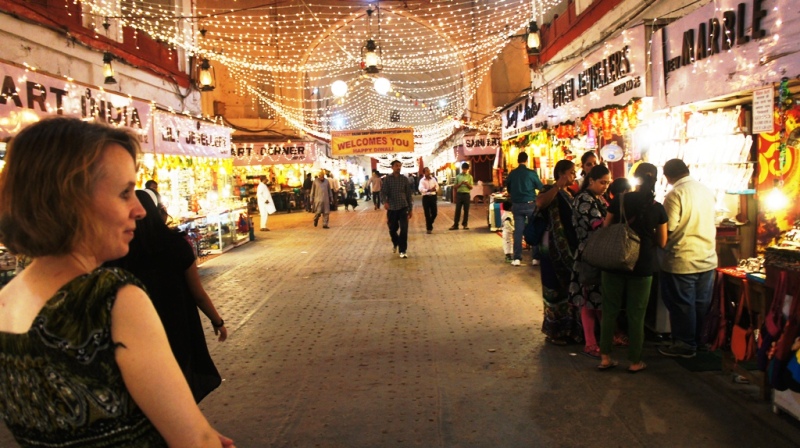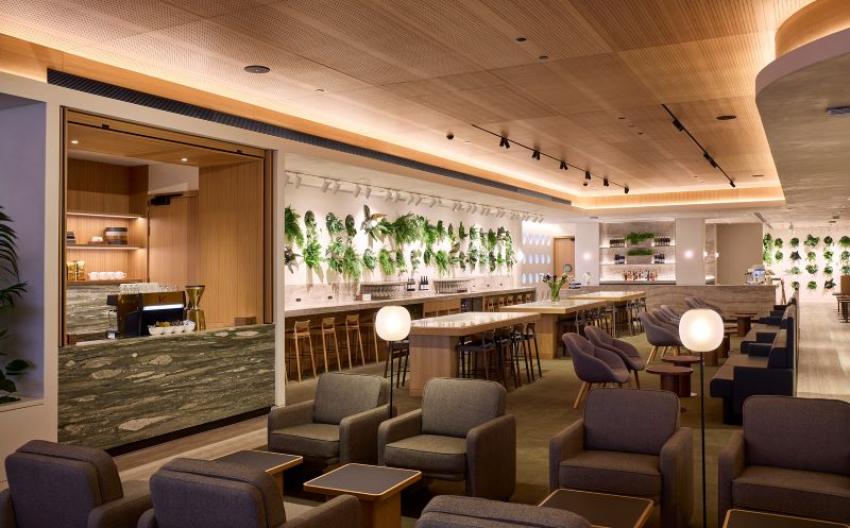NITN | @notintownlive | 08 Jul 2017, 08:39 pm
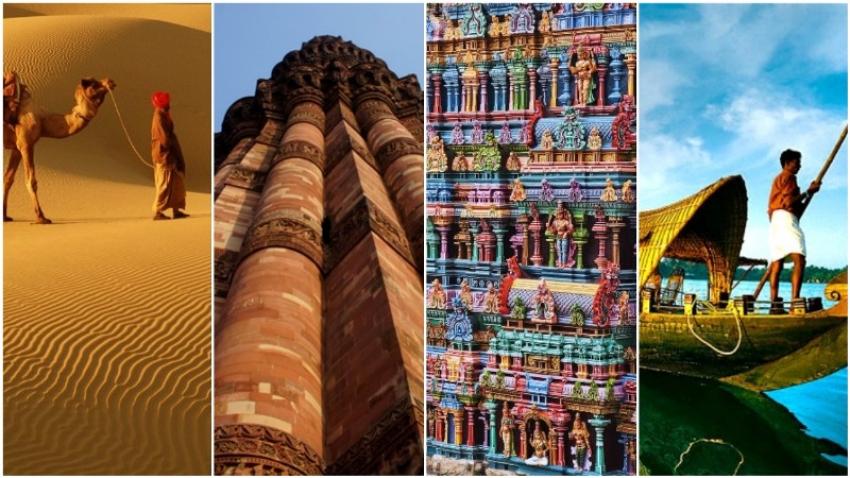

History:
Pre-historic
The Indus Valley civilisation is the earliest known in the region. Although little is known about the rise and subsequent fall of the civilisation, e the twin cities of Mohenjodaro and Harappa (now in Pakistan) are thought to have been ruled by priests and held the rudiments of Hinduism. These civilisations were known to possess a sophisticated lifestyle, a highly developed sense of aesthetics, an astonishing knowledge of town planning and a script language that has remained undeciphered till date. The Indus civilisation, at one point of time, extended nearly a million square kilometres (sq km) across the Indus river valley. It existed at the same time as the ancient civilisations of Egypt and Sumer but far outlasted them. The civilisation is known to have survived for nearly a 1,000 years.
Ancient
The coming of the Indo-European group around 1500 BC provided the final blow to the collapsing Indus Valley civilisation. At the dawn of Vedic ages, the Indo-European group came in from the North and spread through large parts of India bringing with them their culture and religious beliefs. The Four Vedas, or the important books of Hinduism, were compiled in this period. Although it is widely held that the Indo-European group came into India from somewhere in Central Asia and soon spread to other parts of India, there are also very compelling arguments amongst historians that the Indo-European group were native to the rough geographical area that is the Indian subcontinent.
In 567 BC, the founder of the Buddhist religion -- Gautama Buddha -- was born. During this time also lived Mahavira, who founded the Jain religion. Two hundred years later, in the 4th century BC, Emperor Ashoka of the Maurya dynasty, one of the greatest King of Indian history, led the Magadhan Empire based at Pataliputra (present day Patna- and capital of Bihar) to take over almost all of what is now modern India. This great leader embraced Buddhism and built the group of monuments at Sanchi (a UNESCO world heritage site). The Ashoka pillar at Sarnath has been adopted by India as its national emblem and the Dharma Chakra on the Ashoka Pillar adorns the National Flag.
Medieval
The Gupta dynasty was the greatest to rule in the north after the Mauryas, heralding a period known as the ‘Golden Age of India’, while in the southern part of India several different empires --the Cholas, the Pandyas and the Cheras -- spread and grew, trading with Europe and other parts of Asia till the end of the 1100s. Christianity entered India at about the same time from Europe. Legend has it that St. Thomas the Apostle arrived in India in 52 AD. Even earlier than that people of Jewish religion arrived on India's shores. In approximately the 7th century AD, a group of Zoroastrians, or Parsees, landed in Gujarat and became a part of the large mix of religions in India today, each of which adds its important and distinctive flavour. In the 15th century, Guru Nanak laid the foundation of the Sikh religion in Punjab.
Pre-Mughal
In 1192, Mohammed of Ghor, a ruler from Afghanistan, came into India and captured several places in the north including Delhi. When he returned home, he left one of his generals in charge who became the first Sultan of Delhi. During this time Islam, was introduced into a major part of northern India. It may be mentioned that, even before that, just after the period of the Prophet (Praise Be Upon Him), Islam was brought to the western coast of India by Arab traders and flourished in what is now Kerala.
The Delhi Sultanate gradually took control of more and more of North India over the next 200 years, till Timur, who was called "Timur the Lame" or "Tamberlane" came from Turkey in 1398 to attack India which practically signalled the end of the Delhi Sultanate. Soon the Mughals, who were from Central Asia, came in and took control of the north.
In the meantime in the south, in 1336, the Hindu Vijayanagar Empire based at modern day Hampi in Karnataka was established and gained strength.
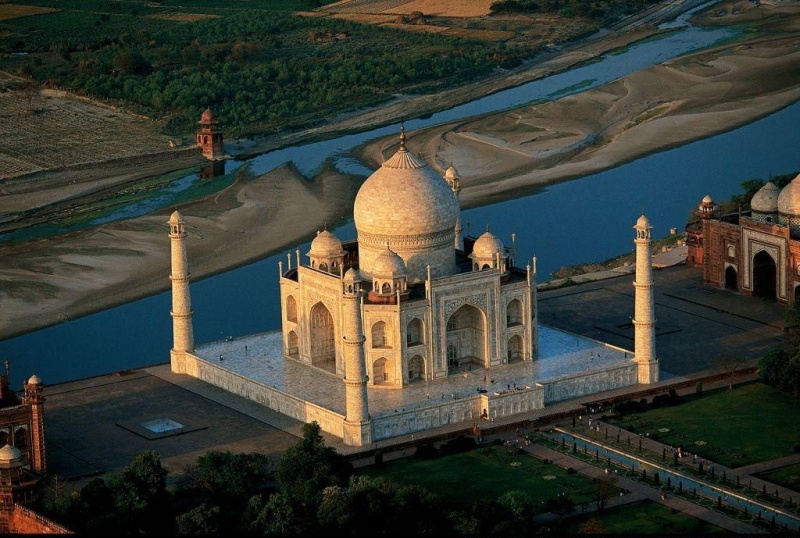
Mughal
The Mughals came from Central Asia and soon held sway over most of the northern parts of the subcontinent. Mughal rulers introduced Central Asian art and architecture to India. In addition to the Mughals and various Rajput kingdoms, several independent Hindu states, such as the Vijayanagara Empire, the Maratha Empire, and the Ahom Kingdom, flourished simultaneously in southern, western, and north-eastern India, respectively. The Mughal Empire suffered a gradual decline in the early 18th century, which provided opportunities for the Afghans, Balochis, Sikhs, and Marathas to exercise control over large areas in the northwest of the subcontinent until the British East India Company gained ascendancy over South Asia.
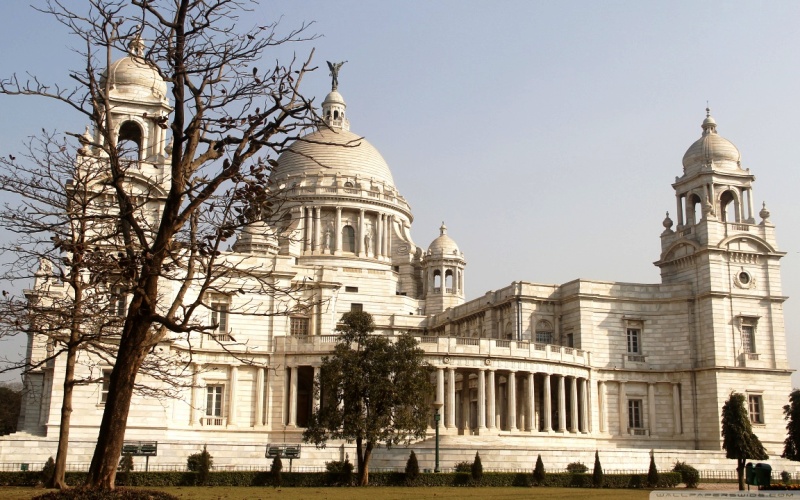
Colonial
The Europeans -- Portuguese, French, Dutch, Danish and British -- started arriving in the early 1600s after Vasco da Gama successfully discovered a new sea route from Europe to India in 1498. All of them held territories in India and made friends and enemies among India's rulers as they got more and more involved with Indian politics, but it was the British who eventually controlled most of India and finally made it one of their colonies. In 1617, the British East India Company was given permission by Mughal Emperor Jahangir to trade in India. In the aftermath of India’s First War of Independence in 1857, all power was transferred from the East India Company to the British Crown, which began to administer most of India as a colony; the company's lands were controlled directly and the rest through the rulers of what it called the Princely states.
Independence
India wrested its independence from Britain in 1947 after a long freedom struggle led largely by the Indian National Congress and its visionary leaders, especially, Mahatma Gandhi. From 1920, the freedom movement leaders began highly popular mass campaign against the British Raj using largely peaceful methods. India’s acquisition of independence resulted in the formation of two countries, India and Pakistan. Following the controversial partition of India, rioting broke out, leaving some 500,000 dead. Also, this period saw one of the largest mass migrations ever recorded in modern history, with a total of 12 million Hindus, Sikhs and Muslims moving between the newly created nations of India and Pakistan.
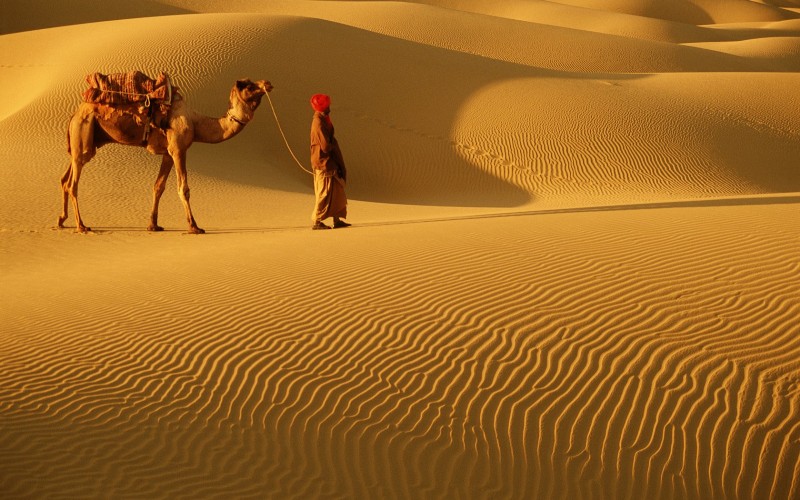
Georgaphy:
Santa Claus of the East
India might not be half the size of the US, but geographically it's a blessed land. It has something for everyone. Mountains, hills, lakes, oceans, streams, deserts...the list is long. Sneak-peek:
East
India is the home of the sacred River Ganges and the majority of Himalayan foothills, East India begins with the states of Bihar, Orissa and West Bengal, which comprise the westernmost part of the region. East India also contains an area known as the eastern triangle, which is entirely distinct. This is the last area of land that extends beyond Bangladesh, culminating in the Naga Hills along the Burmese border.
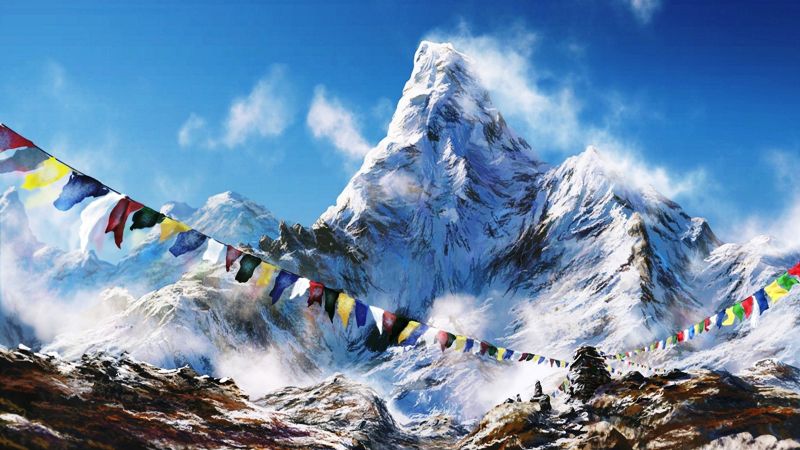
North
Himalayas, the world's highest mountain chain and Nepal as its neighbouring country, dominate India's northern border. Following the sweeping mountains to the northeast, its borders narrow to a small channel that passes between Nepal, Tibet, Bangladesh, and Bhutan, then spreads out again to meet Burma in the "eastern triangle”. North India is the country's largest region begins with Jammu and Kashmir, with terrain varying from arid mountains in the far north to the lake country and forests near Srinagar and Jammu. Moving south along the Indus river, the North becomes flatter and more hospitable, widening into the fertile plains of Punjab to the west and the Himalayan foothills of Uttar Pradesh and the Ganges river valley to the East. Located between these two states is the capital city, Delhi.

West
The states of Gujarat, Maharashtra, Goa, and part of the massive, central state of Madhya Pradesh constitute Western India. Extending from the Gujarat peninsula down to Goa, the west coast is lined with some of India's best beaches. The land along the coast is typically lush with rainforests. The Western Ghats separate the verdant coast from the Vindhya Mountains and the dry Deccan plateau further inland. Apart from the Arabian Sea, its western border is defined exclusively by Pakistan.
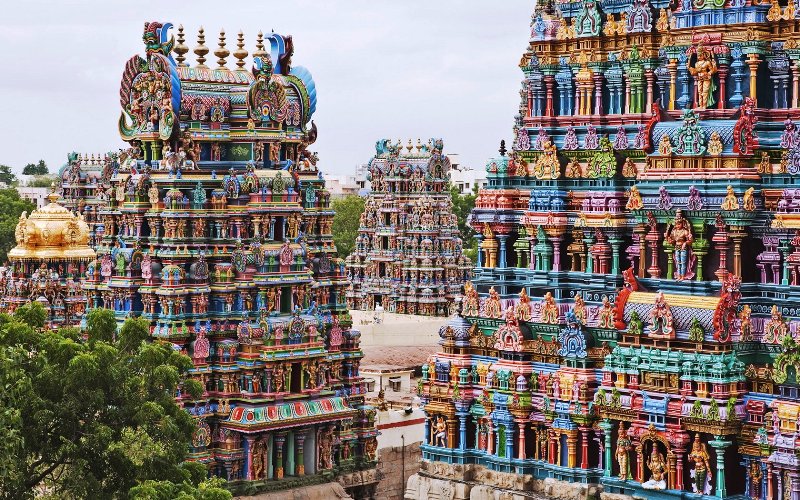
South
India reaches its peninsular tip with South India, which begins with the Deccan in the north and ends with Kanyakumari. The states in South India are Karnataka, Andhra Pradesh, Tamil Nadu, and Kerala. The southeast coast, mirroring the west, also rests snugly beneath a mountain range---the Eastern Ghats, sloping down to the Indian Ocean.
Central
Vindhyachal mountain range defines central India, located as they are almost in the middle part of Indian sub-continent. The mountain range of Vindhyachal extends from the state of Gujarat to Bihar, passing through the central Indian states of Madhya Pradesh and Chhattisgarh. Sonabhadra and Narmada rivers originate from the Vindhyachal, the mountain range that divides India or Bharat into two distinct halves: northern India and peninsular India.
North East
Northeast India refers to the easternmost region of India consisting of the contiguous Seven Sister States, Sikkim, and parts of North Bengal (districts of Darjeeling, Jalpaiguri, and Koch Bihar). In the far northeast, the Chin Hills and Kachin Hills, deeply forested mountainous regions, separate India from Myanmar. The Bangladesh-India border is defined by the Khasi Hills and Mizo Hills, and the watershed region of the Indo-Gangetic Plain. The Patkai, or Purvanchal, are situated near India's eastern border with Myanmar, made up of the Patkai–Bum, the Garo–Khasi–Jaintia and the Lushai hills. The Garo–Khasi range lies in Meghalaya. Mawsynram, a village near Cherrapunji , located on the windward side of these hills, has the distinction of being the wettest place in the world.
Culture:
A doyenne, a pioneer
India is known for many endearing qualities and among those its culture ranks in the upper echelons. From arts to literature to dance to music, the country has been a pioneer in several fields, owing to its antique nature. Sneak-peek:
Literature
The earliest works of Indian literature were orally transmitted. The Rig Veda, a collection of sacred hymns (1500–1200 BCE), and epics Ramayana and Mahabharata composed towards the end of the first millennium BCE, form a part of India’s impressive repository of literary works.Examples of Classical Sanskrit literature include Shakuntala and Meghaduuta, two plays written by Kalidas,indisputable India’s greatest playwright in Sanskrit;Mricchakatika by Shudraka;SvapnaVasavadattam by Bhasa, and Ratnavali by Sri Harsha. Later poetic works include GeetaGovinda by Jayadeva, as well asChanakya'sArthashastra and Vatsyayana'sKamasutra.
In the medieval period, Kannada and Telugu literature gained ascendency in the 9th and 11th centuries, followed by works in Marathi, Bengali, and various dialects of Hindi, Persian and Urdu. Bengali poet Rabindranath Tagore became India's first Nobel Laureateliterature in early 20th century.
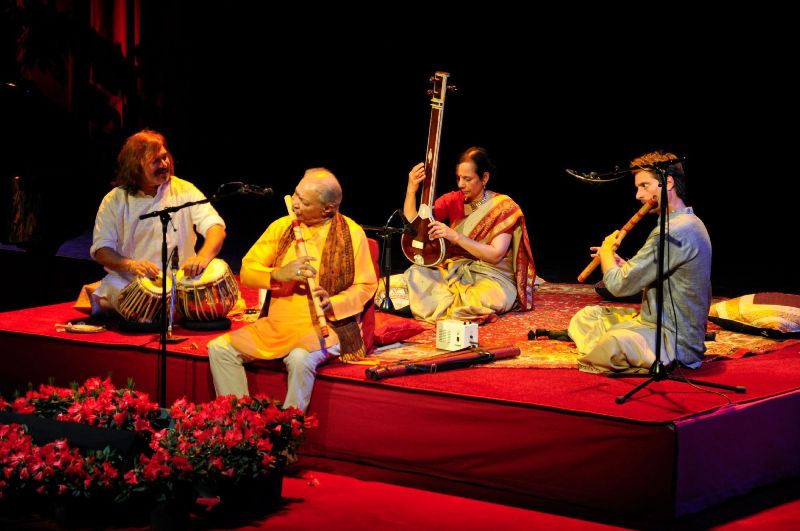
Music
Said to be one of the oldest unbroken musical traditions in the world, Indian classical music has its originsin the Vedas (ancient scriptures of the Hindus). Over the centuries, Indian classical music has also evolved through interaction between different races and cultures.
The foundation of Indian music is ‘sangeet,’ a combination of three artforms: vocal music, instrumental music and dance. Although these three artforms were originally derived from stagecraft, today they represent different, highly complex individual artforms.
The system of Indian music is based onraag and taal with the former being the melodic form and the latter the rhythmic.
Raagcan be roughly equated with the Western term mode or scale. There is a system of seven notes which are arranged similar to Western scales. The taals are complex and revolve around repeating patterns of beats.
The different interpretations of the raag and the taalhas led to the distinction of two major traditions of classical music: Hindustani sangeetof the north and Carnatic sangeet of the south.
Instruments typically used in Hindustani music include the sitar, sarod, surbahar, tanpura, bansuri, shehnai, sarangi, santoor, pakhavaj and tabla. Instruments typically used in Carnatic music include venu, gottuvadyam, harmonium, veena, mridangam, kanjira, ghatam and violin.
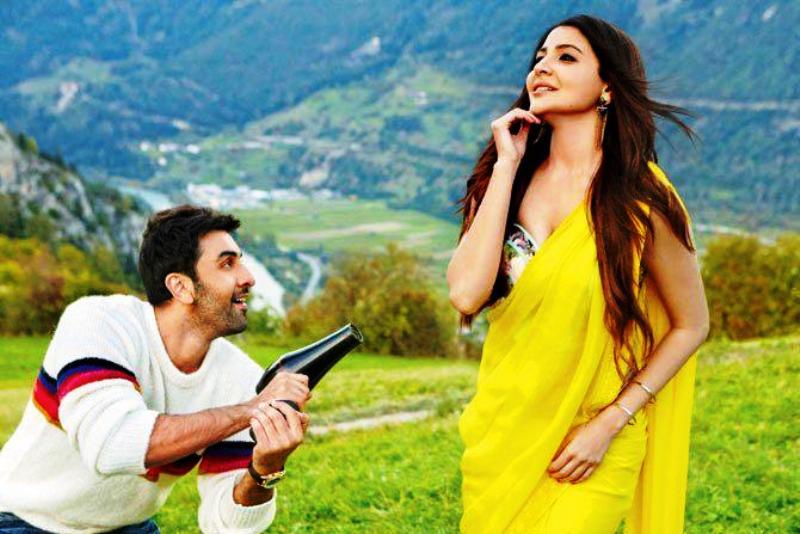
Cinema
India is the world's largest producer of films, with as many as 1,000 films in various languages of India being produced annually. India’s first full-length motion picture,Raja Harishchandra (1913), a silent film in Marathi,was produced by DadasahebPhalke. ArdeshirIrani released AlamAra, the first Indian talking film, on 14 March 1931 and H.M. Reddy, produced and directed BhaktaPrahlada (Telugu), released on 15 September 15, 1931 and Kalidas (Tamil) released on 31 October 31, 1931.
The 'Golden Age' of Indian cinema -- the late 1940s to the 1960s – saw the production of some of the most critically acclaimed Indian films of all time, such as Guru Dutt’s films Pyaasa (1957) and KaagazKePhool (1959) and Raj Kapoor films Awaara (1951) and Shree 420 (1955). These films expressed social themes mainly dealing with working-class urban life in India post independence.
Simultaneously, the Parallel Cinema movement, mainly led by Bengali cinema, emerged. Early examples of films in this movement include ChetanAnand'sNeecha Nagar (1946),[RitwikGhatak'sNagarik (1952), and Bimal Roy's Do BeeghaZameen (1953), laying the foundations for Indian neorealism and the "Indian New Wave". Satyajit Ray’s The Apu Trilogy (1955–1959) won major prizes at all the major international film festivals and led to the 'Parallel Cinema' movement being firmly established in Indian cinema. Ever since ChetanAnand's social realist film Neecha Nagar won the Grand Prize at the first Cannes Film Festival, Indian films frequently competed for the Palme d'Or at the Cannes Film Festival for nearly every year in the 1950s and early 1960s, with a number of them winning major prizes at the festival. Satyajit Ray also won the Golden Lion at the Venice Film Festival for Aparajito (1956), the second part of The Apu Trilogy, and the Golden Bear and two Silver Bears for Best Director at the Berlin International Film Festival. A number of Indian films from different regions, from this era are often included among the greatest films of all time in various critics' and directors' polls.
Commercial Indian cinema, in all languages, continued to grow from strength to strength since then. Today, the provision of 100 percent foreign direct investment has made the Indian film market attractive for foreign enterprises such as 20th Century Fox, Sony Pictures, Walt Disney Pictures and Warner Bros. Indian enterprises such as Zee, UTV, Suresh Productions, Adlabs and Sun Network's Sun Pictures also participated in producing and distributing films. Tax incentives to multiplexes have aided the multiplex boom in India. The Indian diaspora consists of millions of Indians overseas for which films are made available both through mediums such as DVDs and by screening of films in their country of residence wherever commercially feasible. These earnings, accounting for some 12% of the revenue generated by a mainstream film, contribute substantially to the overall revenue of Indian cinema, the net worth of which was found to be US$1.3 billion in 2000.
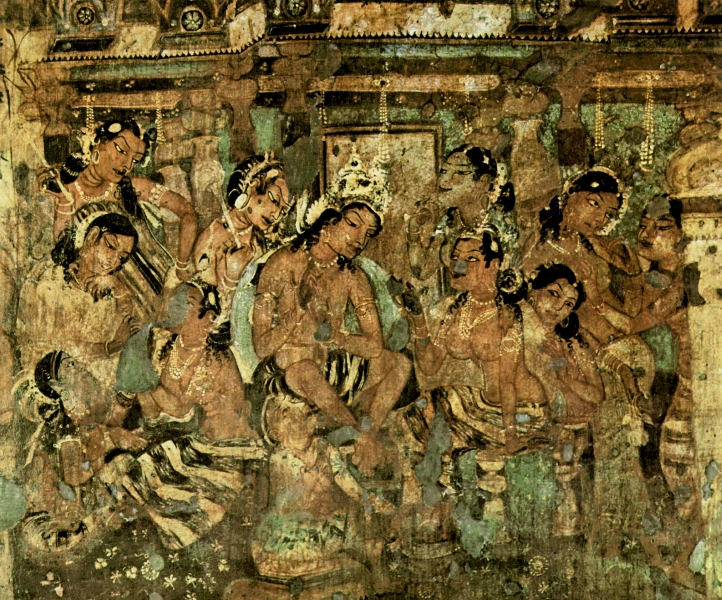
Art
The art of India is inextricably intertwined with the country’s cultural history, religions and philosophies, with the production and patronage of art being linked to social and cultural contexts.
The earliest Indian religion to inspire major artistic monuments was Buddhism. Soon after the Buddhists initiated the rock-cut caves, Hindus and Jains started to imitate them at Badami, Aihole, Ellora, Salsette, Elephanta, Aurangabad and Mamallapuram.
The Chola period, remarkable for its sculptures and bronzes, is represented by some of the finest figures of Siva in various forms, Vishnu and his consort Lakshmi, Siva saints, etc., created by using the lost wax technique
The 2nd century BC Ajanta Caves marked the beginnings of cliff paintings in India. There are known more than 20 locations in India with paintings and traces of former paintings of ancient and early medieval times (up to 8th - 10th century AD such asBagh Caves (Madhya Pradesh), Ellora Caves (Maharashtra) andSittanavasal (Tamil Nadu).
The huge range of folk and tribal art in India is manifested through varied media such as pottery, painting, metalwork,dhokra art, paper-art, weaving and designing of objects likejewellery and toys. The subjects of this art range from puranic gods, local deities, festivals, fairs, myths, nature and legends.
Mughal art and architecture a characteristic Indo-Islamic-Persian style that flourished on the Indian subcontinent during the Mughal Empire (1526-1857). This new style combined elements of Islamic art and architecture, which had been introduced to India during the Delhi Sultanate (1192-1398) and had produced great monuments such as the QutbMinar, with features of Persian art and architecture. A special aspect of Mughal painting is a particular style of South Asian painting, generally confined to miniatures either as book illustrations or as single works to be kept in albums, which emerged from Persian miniature painting, with Indian Hindu, Jain, and Buddhist influences, and developed largely in the court of the Mughal Empire, and later spread to other Indian courts, both Muslim and Hindu, and later Sikh.
British colonial rule had a great impact on Indian art as old patrons of art became less wealthy and influential, and Western art more ubiquitous. Abanindranath Tagore (1871–1951), referred to as the father of Modern Indian art introduced reworked Asian styles, in alignment with a developing Indian nationalism and pan-Asianism to create a new school of art, which is today known as the Bengal school of art. Other artists of the Tagore family, such as Rabindranath Tagore (1861–1941) and Gaganendranath Tagore (1867–1938) as well as new artists of the early 20th c such as Amrita Sher-Gil (1913–1941) were responsible for introducing Avant Gardewestern styles into Indian Art. Many other artists like Jamini Roy and later S.H. Raza took inspiration from folk traditions.
In 1947 India became independent of British rule. A group of six artists - K. H. Ara, S. K. Bakre, H. A. Gade, M.F. Husain, S.H.Raza and Francis Newton Souza founded the Progressive Artist's Group, to establish new ways of expressing India in the post-colonial era. Though the group was dissolved in 1956, it was profoundly influential in changing the idiom of Indian art. Almost all India's major artists in the 1950s were associated with the group. Some of those who are well-known today are BalChabda, ManishiDey, V. S. Gaitonde, KrishenKhanna, Ram Kumar, Tyeb Mehta, Devender Singh, Akbar Padamsee, John Wilkins, Himmat Shah and ManjitBawa. Present-day Indian art is varied as it had been never before. Among the best-known artists of the newer generation include Sanjay Bhattacharya, Bose Krishnamachari, Narayanan Ramachandran, GeetaVadhera, Devajyoti Ray, Satish Gupta, and Bikash Bhattacharya.
Contemporary Indian art takes influence from all over the world. With many Indian artists immigrating to the west, art for some artists has been a form of expression merging their past with their current in western culture.
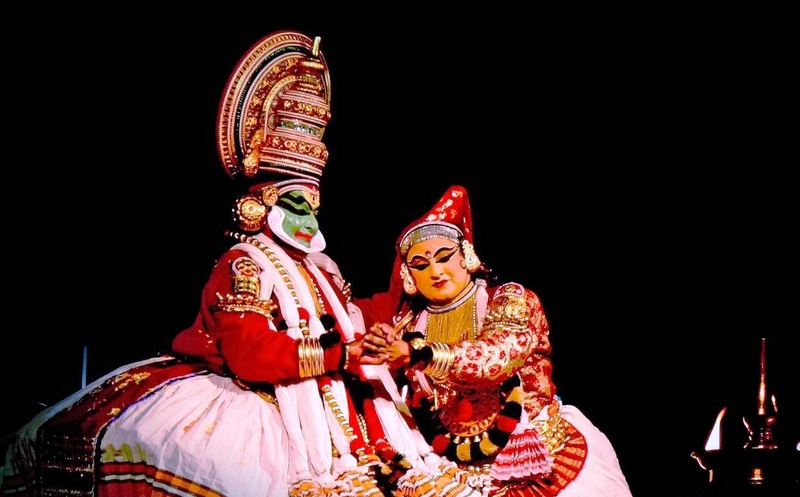
Dance: Divided by style, United by the land
Bharat Natyam
Bharat Natyam, one of the oldest Indian classical dance forms, is in essence of dedicatory dance performed by Devadasis(girls dedicated to a deity or to a temple)in temples, primarily in Tamil Nadu and to a smaller extent in Andhra Pradesh and Karnataka. The dance form evolved around 500 B.C to 500 AD. The key posture of this dance form requires the upper part of the body to be erect, the legs bent halfway down with the knees spread out, and the feet positioned like a half open fan. Practically every part of the body has its distinct movement.The songs used are composed from the poetic literature of Tamil, Telegu, and Sanskrit and, to some extent, Kannada. The accompanying music is in pure Carnatic style.
Kuchipudi
The art form takes its name from the village of its birth, in the Krishna district of Andhra Pradesh. Kuchipudi was the result of the Bhakti Movement in the 6th century, when Siddendra Yogi, the progenitor of the form, presented a dance drama with boys from the village of Kuchipudi. Consciously they raised the form above the reach of Devdasi. The boys were committed to an annual presentation of the form and they passed on the techniques to the next generation. So a tradition and a form were born.The performer has to express through the language of gestures, speech and song. The Kuchipudi artiste, apart from being a dancer and an actor has to have a high proficiency in Sanskrit and Telegu languages, music and the texts of performance.Kuchipudi plays are performed in the open air on improvised stages at night. The sutradhar, or the master of ceremonies, plays an integral role introducing characters, providing humour and tying together the performance. The fast paced nature of the dance has made it a popular dramatic form.
MohiniAttam
MohiniAttam is one of the youngest Indian classical dances, and evolved in the 16th century under the patronage of Maharaja Swati Thirunal of Travancore (present day south Kerala).Mohini means a maiden who excites desire and her dance is known as MohiniAttam. From the inception itself, MohiniAttam was conceived as a form of social diversion. The themes of the songs were both religious and social.In the matter of technical format, there are many similarities between MohiniAttam and Bharat Natyamwith the central motif of adavus (gestures) being the same. It is essentially a solo dance and performed by women with tender and graceful body movements belonging to the lasya (extremely feminine and fluid type of dance) style. Hand gestures play an important part as a communication medium.The costume comprises a white sari with gold ornaments on the neck, waist, wrists and a typical hair bun with flowers on the left side of the head.The dominant emotion in MohiniAttam is of shringara (love).
Kathakali
Kerala’s Kathakali, heroic, majestic and epic in character, is not more than 300 years old, though its roots can be traced to 1,500 years earlier. It symbolises the blending of the Aryan and Dravidian cultures and is thought to have evolved out of the various ancient theatre traditions of the region like Krishnattam, Ramanattam, Koodiyattam, Mudiyyetu and Teyyam. MahakaviVallathol of Cherutoorthi (Palakkad) contributed greatly in the revival of this art by forming Kalamandalam, the famous teaching institution, set up in the 1930s. Mostly based on the mythology and the themes of Ramayana and Mahabharata, a Kathakali performance opens with the thunder of drums, which invites the audiences. The performance lasts night long and, till recently, only men were allowed to perform even female roles. As a form of art, Kathakali is a sophisticated spectacle of the supernatural.
Odissi
A dance form born in the state of Orissa, Odissi manifested in temple sculptures from the 2nd century BC, practiced and enriched by the Devadasis. With the construction of the Jagannath Temple in Puri in the 12th century, the practice of dedicating devadasis in the service of the temple was initiated and continues to this day. At once sensuous and spiritual, the dance form has the ability to portray erotic sentiments in a deeply reverential manner. Odissi is a highly stylised dance with tribhanga or the three-bend attitude of Hindu sculpture. The bhava or feeling is chaste and orthodox, with flashes of heightened dramatisation. The accompanying music is pure and classical, with graces of both the Hindustani and the Carnatic styles. The instruments traditionally used are the mandala (drums), gini (small cymbals) and the flute.
Manipuri
There is no authoritative record of the history of Manipur's dance and music prior to the 18th century AD. However, the lasting developments in technique and methods took place during the time of Jai Singh (1764-89), who was a great devotee of Lord Krishna and a follower of Vaishnavism.Among the legendary and mythological tales, the Rasa Lila, dance performed by Shiva and Parvati and Lai Haraoba of Khamba and Thoibi, the celebrated lovers, deserves special mention.In the Ras Lila, the movements are extremely graceful coupled with soft and light steps in which the heels never touch down.
Kathak
Kathaks were originally story tellers who used to dance to illustrate 'Kathas' or stories. They were attached to the temples of North India. With the advent of Muslim rule, Kathak went from the temple to the courts. Consequently, Kathak flowered as a form in the Hindu courts of Rajasthan and the Muslims courts of Delhi, Agra and Lucknow. Court patronage led to the evolution of Kathak into a highly technical and stylised art with emphasis on the solo performers and their virtuosity. Gradually, the two schools became distinctively different: the Jaipur Gharana (ideology in this context) focussed on layakari, or rhythmic wizardly; while the LucknowGharana expounded bhava or moods and emotions. However, both schools have Radha& Krishna as their central theme.Rhythm, timing and so footwork are the main planks of Kathak. The musical accompaniment to the 200 ghungrus or bells on the dancer's feet, are the sarangi and the tabla. Kathak is a true fusion of the Hindu and Muslim genius in art and it the only classical dance of North India.
Chhau
The etymologic root of the word Chhau is traced to the Sanskrit Chhaya or shade, referring to the mask used by the dancers. Others aver, it is derived from the word 'Chauuni' where the pharikhanda (shield and sword) soldiers stayed. The technique of the dance, in fact, draws on steps and gait which stem from the 'Pharikhanda System'. It is basically a martial dance where the mask holds the dominant Rasa while the body creates, projects, and develops the moods. Chhau has three schools: Seraikella in Bihar, Mayurbhanj in Orissa, and Purulia in West Bengal. While all the three Chhau forms are danced by men, Mayurbhanj uses no masks but the others do. The themes are based on mythology, everyday life, aspects of nature or just a mood or emotion. PuruliaChhau, however, has a single focus - good triumphs over evil. The music is based on Hindustani Ragas and the accompaniment is with a Nagara, a huge kettledrum, Dhol, a cylindrical drum, and Shehnai or reed pipes. The strenuous nature of the dance restricts performances to brief periods but, in PuruliaChhau, a single item could last 40 minutes and a performance, night long.
Folk Dances
Indian folk and tribal dances are an expression of joy. Folk dances are performed on every possible occasion, to celebrate the arrival of seasons, birth of a child, a wedding and festivals. The dances are simple in terms of steps or movements but burst with verve and vitality. Men and women perform some dances exclusively, while in some performances men and women dance together. On most occasions, the dancers sing themselves, while being accompanied by artists on the instruments. Each form of dance has a specific costume. Most costumes are flamboyant with extensive jewellery.
The north-east part of the country is the home for over 60 tribes, and each tribe has its own range of tribal dances. The dances of the Nagas and the Bihus of Assam are performed to celebrate spring and harvesting.
The main folk dance of Gujarat, the Dandiya, is performed using sticks. Each performer holds two sticks, which they strike alternately to the right and left while the group dances. They also move diagonally, clockwise, anti-clockwise, as they strike the sticks.
The Bhangra of Punjab is performed by men, to the rhythm of the drum. The dance includes a wide range of athletic leaps and jumps. Dancers stand on each other's shoulder while dancing to the music.
There are hundreds of Indian folk and tribal dances. Each region of India has its own folk dance. Both men and women perform the bamboo dance of Mizoram. While the men hold the bamboo, the women folk dance between the bamboo sticks. In this performance, the sound of the bamboo hitting each other is the rhythm.
In the south, the dummy horse dance or the Poikalkuthirai is very famous. Dancers fit dummy legs to their legs and dance to music. Both men and women perform this form of art. In Tamil Nadu, dancers place a karagam or a decorated jug on their heads and dance while balancing the karagam.
While there are numerous folk and tribal dances, they are constantly adapted and innovated. The skill and the imagination of the dances influence the performance.
ESSENTIALS FOR FOREIGN TOURISTS
Getting Your Visa
Foreign nationals wishing to travel to India are required to possess a valid passport of their country and a valid Indian visa. However, nationals of Nepal and Bhutan do not require visa to enter India and nationals of Maldives do not require visa for entry in India for a period up to 90 days (a separate visa regime exists for diplomatic/official passport holders).
The Consular Passport and Visa (CPV) Division of the Ministry of External Affairs is responsible for issuing Indian visas to foreign nationals for their visit for various purposes. This facility is granted through various Indian missions abroad.
Visa fees are non-refundable and subject to change without notice. The Embassy/High Commission/Consulate reserves the right on granting and deciding the type/duration of visa irrespective of the fees tendered at the time of making the application. The granting of a visa does not confer the right of entry to India and is subject to the discretion of the Immigration Authorities.
Specific visas are granted for different purposes:
Types of visa
Type Period Documents required
Tourist Visa : 6 months Documents supporting the applicant’s financial standing
Business Visa: One or more years Letter from the sponsoring organisation
Student Visa: For the duration of the
academic course of study
or for a period of five years
whichever is less Proof of admission to recognized Universities/Institutions in India
Transit Visa: Maximum For 15 Days Evidence of onward travel to a destination outside India
Conference Visa: For the duration of the
conference or seminar Letter of invitation from the organiser of the conference
Medical Visa: Upto one year or the period
of medical treatment
whichever is less. Visa can be granted to Attendant who is a blood relation to the patient and is co-terminus with the Medical Visa Documents from registered medical institutions/ doctors supporting the need for medical treatment along with letters from Indian medical institution.
Visa on Arrival: Only for citizens of Finland, Luxembourg, Singapore, New Zealand, Japan, Cambodia, Laos, Vietnam, Philippines, Indonesia and Myanmar.
Visa Application Form
Visa application form is available at the office of Indian Embassy/ High Commission/Consulate in the country where the applicant resides. Visa form for nationals of Pakistan and Bangladesh are generally different. All applicants, including children need to apply for Visa in separate visa forms.
Procedure for obtaining Visa
Visas can be applied for in person or by post at Indian Embassy/ High Commission/ Consulate based in the country from where the candidate intends to depart for India. You are requested to contact the nearest Indian mission for details.Specific visas are granted for a variety of purposes that are aforementioned.
Requirements for Visa
Generally the following documents are required for obtaining Indian Visa. However, the requirement may vary from country to country.
Original passport valid for at least 6 months
Visa fee
Two passport size photographs
Supporting documents, where necessary
Duly completed application form
Visa for NRIs and PIOs
Persons of Indian Origins and Non-Resident Indians who possess either OCI (Overseas Indian Citizenship) or PIO card don't need to apply separately for an Indian Visa. OCI and PIO cards give them the freedom to visit India without visa within rules. However, those NRIs and PIOs who don’t have OCI or PIO card can apply for and get Indian visa through the procedure mentioned above.
Tourist Visa on Arrival
The Government of India has announced a scheme of granting Tourist Visa on Arrival for the citizens of eleven countries. The scheme is valid for citizens of the countries mentioned below planning to visit India on single entry strictly for the purpose of tourism and for a short period of upto a maximum of 30 days. The salient features of the scheme are given below:
WHO IS ELIGIBLE:
Citizens with valid passports of the following countries:
Cambodia, Finland, Indonesia, Japan , Laos, Luxembourg, Myanmar, New Zealand, Philippines, Singapore, Vietnam.
Visiting India for the purpose of tourism (recreation, sight -seeing, visiting friends and relatives)
Fulfills all other criteria for grant of normal tourist visa to India like assured financial standing (production of return ticket and proof of availability of sufficient funds to spend in
India), passport of at least six month validity and reentry permit if required.
WHO IS NOT ELIGIBLE:
Citizens of the above countries who was or whose parents or grand parents (paternal or maternal) was born in, and was permanently resident in Pakistan.
Persons holding Diplomatic/ Official passports
A person who is a resident of India and /or works in India
A person who is declared persona non grata by Government of India and is not the subject of a black list or any warning circular or other restrictive list
VALIDITY
The Visa on Arrival is valid for a single entry into India for a period of upto 30 (thirty) days.This Visa is non-extendable and non-convertible and will be issued at arrival only at the designated international airports of Delhi, Mumbai, Chennai and Kolkata. Only two visits on a Tourist Visa-on-Arrival shall be permissible in a calendar year and there shall be a gap of at least two months between each visit.
FEE
The fee for the visa on arrival is USD 60 (Sixty United States Dollars) or equivalent amount in Indian Rupees per passenger (including children).
Disclaimer:
The above is only for information. You are requested to contact the nearest Indian Mission (Embassy/ High Commission/ Consulate) or visit their websites for up-to-date information regarding visas, fees, procedures, etc.
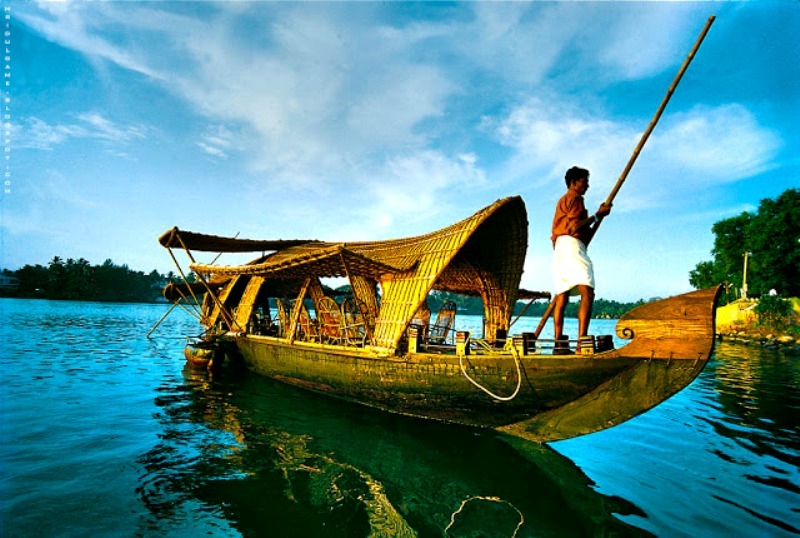
SOURCE of TEXT and IMAGES: Incredibleindia.org/ Internet Wallpapers /Wikipedia
- Not In Town Travels: Discover the Globe, Your Way
- Spain's vibrant LGBTQ+ celebrations draw global attention and celebrate inclusion
- Texas: Experience music like never before in Austin
- Unique aboriginal guided walks in Australia
- A Scenic Summer Adventure in Mammoth Lakes in California
- Snorkelling in Australian waters opens up an array of underwater treasures
- Ghana: Ever thought of visiting a traditional grove conservation site?
- 700 km hiking trail in Jordan is a multi-cultural treasure
- Reasons why you can choose Seychelles for holiday this year
- Oman’s true natural wonder is ‘Al Hoota Caves’
Mumbai: IndiGo has commenced operations from the newly inaugurated Navi Mumbai International Airport (NMIA).
Qantas is set to open its new Auckland International Lounge on Dec 17, ahead of the peak holiday travel period, as the airline expands its trans-Tasman network. The new facility replaces the previous lounge and increases both floor area and passenger capacity.
Air Canada has introduced a new non-stop route connecting Toronto with Rio de Janeiro, with the first flight landing in the Brazilian city on Friday morning.

